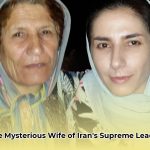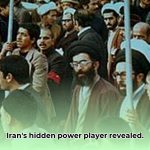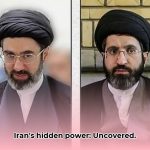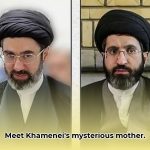Ever wonder about the woman behind the Supreme Leader of Iran? Mansoureh Khojasteh Bagherzadeh, wife of Ali Khamenei, is a figure shrouded in mystery despite her influential position. We’re going to examine what we *do* know about her family background and how this information compares to other prominent women in Iran’s history. It’s a detective story, piecing together clues to create a picture, while acknowledging its inherent incompleteness. We’ll be upfront about the gaps in our knowledge, demonstrating how even partial information can illuminate her life and the world she inhabits. For a more in-depth biography, see [this resource](https://www.lolaapp.com/mansoureh-khojasteh-bagherzadeh-biography).
Mansoureh Khojasteh Bagherzadeh: Family Background and Early Life
The life of Mansoureh Khojasteh Bagherzadeh, wife of Iran’s Supreme Leader Ali Khamenei, is characterized by a notable lack of publicly available information. While her position as the Supreme Leader’s wife undoubtedly grants her influence, details about her personal history and family remain scarce. This isn’t merely an oversight; it’s a deliberate choice that reflects the pervasive control and secrecy within Iran’s power structures. Understanding her story requires piecing together fragments of information, often relying on scattered and sometimes contradictory accounts. These few known facts offer intriguing clues into her world and Iran’s veiled political landscape. Why is it so difficult to obtain concrete information about her early life and family connections?
Key Details: Known Facts and Biographical Fragments
We know that Mansoureh Khojasteh Bagherzadeh was born in Mashhad, a city of immense religious significance for Shia Muslims in Iran. Coming from a religious Persian family. Her father, Mohammad Esmaeil Khojasteh Bagherzadeh, was a businessman, which suggests a degree of financial stability and social standing. This success likely provided her with a comfortable upbringing. Her brother, Hassan Khojasteh Bagherzadeh, held a senior position at IRIB (Islamic Republic of Iran Broadcasting), the state-controlled media organization. This connection to a powerful media outlet implies a significant level of familial influence within Iran’s established power structures. She married Ali Khamenei in 1964, a politically significant year, which marked her entry into the upper echelons of Iranian politics. Together, they have six children: Mostafa, Mojtaba, Masoud, Meysam, Boshra, and Hoda. This timeline of major life events provides a basic framework for understanding her life.
However, detailed information becomes scarce beyond these basic facts. Even seemingly simple details, such as her exact birth year (estimates vary between 1945 and 1947) and height, are inconsistent across different sources. This persistent lack of information raises questions about deliberate obfuscation rather than mere discrepancies in record-keeping. While various sources repeat the same details about her father and brother, verifiable, independent confirmation remains elusive.
Unanswered Questions and Speculation Regarding Influence
The dearth of information surrounding Mansoureh Khojasteh Bagherzadeh’s life is striking. Details about her education are largely unknown. Did she pursue higher education? What were her academic interests? Did she have a career before her marriage? These questions remain unanswered. Public images of her are rare. Has she intentionally chosen to remain out of the public eye, or are there other factors at play? Her virtual absence from public appearances and photographs adds to the mystery. Some observers suggest this deliberate management of her image is part of a broader strategy to emphasize her husband’s prominence. What impact does this lack of verifiable information have on our understanding of her role in Iranian society?
The lack of information inevitably invites speculation. Is her limited public profile a conscious decision to allow her husband to maintain control over the public narrative? Did her family’s background and connections play a role in shaping her husband’s career? Her brother’s position at IRIB suggests a powerful connection to media control, a key element of governmental authority. Without more data, definitive answers remain elusive, but the questions themselves deserve consideration. The very fact that this information is so carefully guarded is itself revealing, reflecting broader patterns of secrecy within the Iranian political system. What are the implications of this secrecy for understanding the dynamics of power within Iran?
The Critical Need for Transparency and Reliable Sourcing
Uncovering the full story of Mansoureh Khojasteh Bagherzadeh’s family background requires sustained research. We have assembled a few basic facts, but the numerous gaps highlight the importance of greater transparency. This is more than just satisfying curiosity; it is about understanding the complex dynamics of power within a country with significant global influence. The difficulty in accessing information about her underscores the challenges faced by those seeking to shed light on the inner workings of the Iranian political system. Independent journalism, rigorous investigation, and a commitment to accountability are essential.
Further research may clarify her education, professional life (if any), and the extent of her family’s influence. This would deepen our understanding of her role in Iranian history, regardless of her choice to remain largely out of public view. What sources of information might be available, and what strategies could be employed to access them?
Knowns and Unknowns: A Summary
| Category | Known Facts | Unknown Facts |
|---|---|---|
| Birth & Family | Born in Mashhad, Iran; religious family; father was a businessman; brother worked at IRIB. | Exact birth year; details about her mother’s family; other siblings; precise extent of family wealth and connections; verified sources. |
| Education & Career | Currently unknown. | Level of education; any professional endeavors before or after marriage; specific details about academic or professional achievements. |
| Public Life | Very limited public appearances; no known interviews. | Personal views on social or political issues; any involvement in charitable work; motivations for maintaining a low profile. |
| Family Influence | Family likely held influence within religious and business communities. | Precise nature and extent of the family’s influence on Iranian politics and society; specific examples of their influence. |
| Marriage & Family | Married to Ali Khamenei in 1964; mother to six children. | Details of her relationship with her children; her role within the family unit beyond the public persona. |
The story of Mansoureh Khojasteh Bagherzadeh is incomplete. As more information becomes available, the narrative will evolve, offering a more complete picture of her life and the context in which she lived. The pursuit of this information is essential for understanding the complexities of Iranian politics and society.
Mansoureh Khojasteh Bagherzadeh’s Influence on Iranian Politics and Policies
The secretive nature of Iranian politics makes assessing the influence of figures like Mansoureh Khojasteh Bagherzadeh a challenge. Her connections to powerful individuals, especially her marriage to Supreme Leader Ali Khamenei, invite speculation about her role in shaping the country’s direction. Yet, concrete information remains elusive. This lack of transparency is itself a significant factor in evaluating her impact. Is it possible to accurately assess someone’s influence when so much remains hidden?
Understanding the Limits: Transparency and Public Information
Our knowledge of Mansoureh Khojasteh Bagherzadeh’s personal life and career is limited. This scarcity of publicly available information shrouds her influence in mystery. Basic information about her family background, education, and career is scarce. This lack of readily available data poses a major obstacle for researchers attempting to assess her political impact definitively. The absence of information can be as telling as any statement. What strategies can be used to gather information despite these limitations?
Exploring Potential Scenarios: Speculation and its Constraints
While anecdotal claims and unsubstantiated reports exist, verifiable information about her direct involvement in policy-making remains absent. The lack of concrete data necessitates caution when assessing her impact. What methodologies can be employed to differentiate between credible analysis and unfounded speculation?
Indirect Influence and Power Dynamics: Familial Roles and Connections
The role of Khamenei’s family in Iranian politics has been a subject of much discussion, with some observers suggesting his relatives wield considerable influence behind the scenes. Khojasteh Bagherzadeh, as his wife, is often presumed to be part of this network. To what extent does Iranian culture and tradition allow for women to exert influence through their husbands?
Assessing Influence: The Opaque Nature of Iran’s System
The opacity of Iran’s political system poses a major obstacle to understanding Khojasteh’s precise impact. The lack of transparency surrounding appointments, decision-making processes, and power struggles makes evaluating individual influence extremely challenging. How can one determine the extent of her influence when so much of Iran’s political process occurs outside public view? This challenge underlines the need for more open government practices and freedom of information.
The Importance of Continued Investigation and Reliable Information
Despite the challenges, continued investigation and the pursuit of reliable information are essential to understanding the dynamics of power within Iran. Only through persistent efforts can we hope to gain a more complete picture of Mansoureh Bagherzadeh’s role, and the broader forces shaping Iranian politics. What role can investigative journalism and academic research play in shedding light on these issues?













